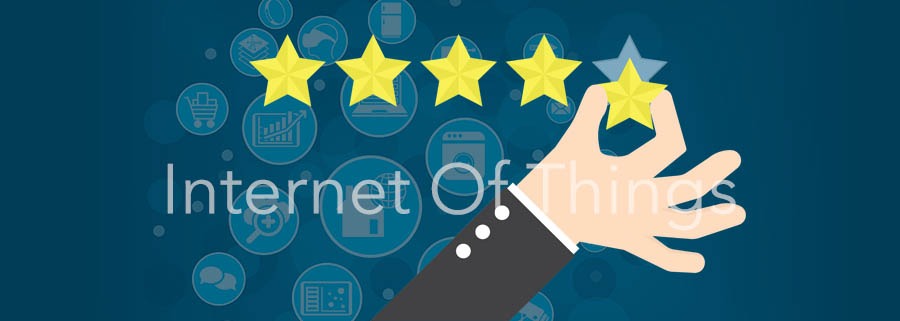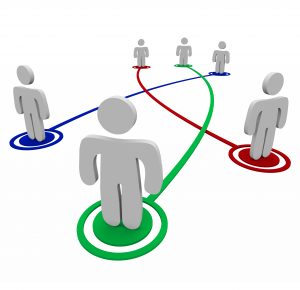At Infolink-exp, we’re passionate about customer success. With every customer experience that we provide to users of IoT devices at home, in the car or at the office, on behalf of our partners, we feel like we’re making the life of those people just a little bit easier, more comfortable and more pleasant. Customer Success (in capitals :), as a discipline in the gut of a technology company, is no longer just for SaaS. Any technology business that depends on gaining product adoption, customer retention and revenue expansion (through renewals of service plans or sales of other accessories, upgrades, etc.) can absolutely operate using the best practices of Customer Success. The consumer Internet-of-Things industry is NO exception. That is why Kristen Hayer, our partner at The Success League, was asked to provide her expert advice on how Customer Success should be practiced within this group of companies. Hope you enjoy and get a nugget or two out of this first post in our series…
José González, CEO – Infolink-exp
Customer Success is moving beyond B2B SaaS, and is being recognized as a critical function in any organization with a subscription or recurring revenue model. Although most executives still think of white-glove service when they think of customer success, in fact, customer success runs across a spectrum from high-touch and human-driven, to an entirely automated experience. If you view customer success as a program that demonstrates continue value to customers over time, it is easy to see how it can fit into the IoT space.
There is significant variation across IoT companies as well. Many offer products primarily designed for consumers, with business models that need to support tens or hundreds of thousands of customers. However, others are business-focused, and have a model that looks a lot like a SaaS with a product attached to it. Given the differences between IoT organizations, it can be challenging to apply a single customer success approach to the field. Instead, we have found it helpful to consider the following framework when determining how best to implement customer success inside organizations that operate outside of the SaaS model.
Desired Outcomes
Customers buy products hoping for different outcomes, and as you’re thinking through ways to build your customer success program, it is critical to consider what those outcomes are, and how you can help your customers achieve them. Every single customer is different, but often in IoT the high volume of customers makes it prohibitive to uncover the specific needs of each one. Two things to consider as you build your customer success approach:

Gather Information – If you’re in a low-volume organization this is a little simpler. Talk to your customers and ask why they purchased your solution, what they hoped it would help them to achieve. In a high-volume company, you simply can’t talk to all of your customers individually. Instead, consider talking with a cross-section of customers across different demographics or alternately, surveying your customers. If you choose to survey, be careful not to design leading questions based on your assumptions about your product. Either way, collect the data and use it to…
Segment Customers – Customer segmentation is related to, but different from marketing segmentation. Marketing teams are focused on getting the customer to the initial purchase. The messages they use appeal to customers enough to get them to buy, but don’t always represent the value the customer is hoping to achieve with your solution. In addition, customer expectations shift over time, so if you are after repeat revenue it is important to understand what customers are looking for long-term. Once you have created value-based segments, you can design the optimal…
Customer Journey
The role of a customer success program is to guide a customer to the outcome they are looking for. To use an IoT example, let’s say your organization produces a wearable that both tracks health and provides email notifications. Some of your customers are looking for an outcome like weight loss, while others are hoping to be more efficient at work. Different journeys are required to get each of these customers to their expected outcome. Consider each stage in the customer lifecycle as you think about how to build the journey:

Activation – The first step in building long-term value is getting the customer to activate their product. Depending on the solution, this first step can be the biggest challenge. Can you build in technology to make it easier? Can you create incentive programs that drive customers to take that step? Should you involve a human touch at this point?
Adoption – Once the customer has activated their new product, they have to learn to use it. This involves changing their habits. Can you gamify your product to drive change? Are there messages that help customers see how other people have used the product effectively?
Ongoing Use and Expansion – If you have a land and expand business model, you need to consider how you will talk to customers about your other offerings. Can you build in notifications that help customers understand when an upgrade makes sense? How can you advertise other products? Would it make sense to have people contacting customers?
Advocacy – Word of mouth is critical to building new business, especially in IoT. Think about how you can turn customers into advocates. Can you offer referral benefits? Can you feature customers who have achieved success with your product? Can you create a community around your solution?

Renewal – If your organization has a formal renewal cycle, you need to be focused on getting customers to make a buying decision, again. However, even if customers renew month to month, they are still making a decision to stick with you. How do you continually demonstrate the value that a customer is getting from your solution?
Level of Automation
A final consideration, as you build your customer success program, is the level of automation you should have in place. Some customer success programs are very high-touch, with little automation and mostly human interaction. Others are entirely automated, with technology providing the right messaging to the right customer at the right time. Most SaaS companies have blended programs. As you think about the level of automation that is right for your program, consider the following:

Price Point – If your business is high-volume, and your customers are paying less than $5000 per year, it is going to be really tough to justify the cost of a high-touch program. On the other hand, for products that cost $50,000 per year or more, customers will expect a point of contact.
Brand Promise – If your brand is high-end, your customers will be looking for a higher-touch, personal level of service. If you have a low-cost brand, your customers won’t be expecting a human touch point.
Technology Comfort Level – Is your target market tech-savvy, traditional, or somewhere in between? Customers who aren’t as comfortable with technology may need a personal touch to move through the customer journey. On the other hand, tech natives may prefer a technology-based experience.
Customer success isn’t just for SaaS anymore. It is critical to demonstrate ongoing value to customers in order to retain them and turn them into advocates for your brand. Be sure that your customer success program aligns with your product, target market, and business model by considering this framework. Here’s to your success!


